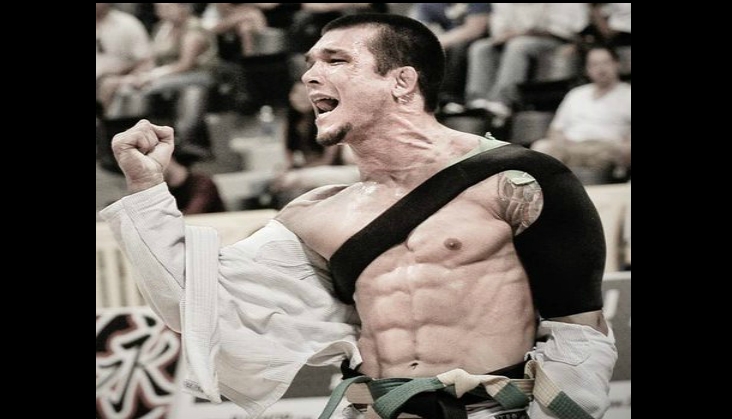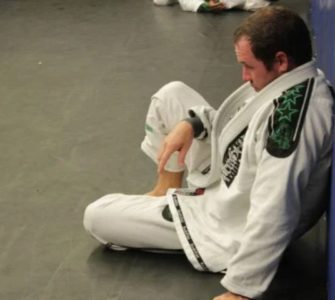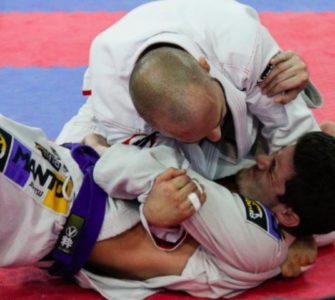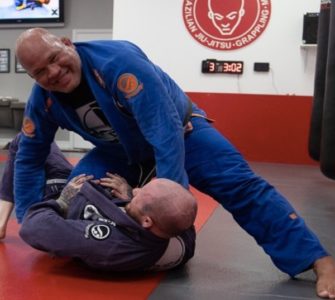To get injured is something one should never wish to any opponent on the mats, since we know how hard it is.
We are in a sport where there is so much manipulation of the body and often it is involuntarily. The good thing about BJJ is that you become more flexible, your bones and muscles become stronger but there is a limit for each one of us and when we go over that limit, injuries will happen. There are some injuries which are more serious than others, but when you have to be off the mats for more than 1 month it can be depressing, especially if you were preparing for a competition.
For the time you’re off, there are some things that can help you throughout this difficult period. If you hurt a knee or ankle for example, you can work on your grips, work on your flexibility exercises, you can study videos, read and also set some long term goals for your return. Visiting your BJJ academy and watching the training occasionally, will help a lot.
When the time to return comes, we have the following recommendations and important points.
PREMATURE RETURN
This is something we have to be very careful about, personally I have made this mistake, you think that the pain is not as intense as it once was and you are ready to start training again like before. Oh surprise when after only two days it’s hurting again! So you must always follow the direction of a professional, your doctor or therapist. We have some tips to make your return more secure, lasting and glorious!
SLOWLY
If you were gone for a couple of months or more, it is likely that things have changed; new faces around the academy, your main drilling and training partner might be now drilling with someone else (even if it sounds sentimental) you feel that you forgot the techniques that you learned, you know you are going to be smashed, well… that’s only part of it. The recommendation for your return is to first only drill and do the techniques for at least your first 3-5 classes (I know you’re dying to roll). This takes us to our next point.
WHEN TO ROLL
Rolling is one of the most fun parts but it is not recommended right after the first days of your return; Even if you tell your partner “just don’t to these positions” or “watch ot for my foot, it’s the injured one” Within the first days of doing the techniques and drills you will see how you feel moving, if you have discomfort or you feel good. One of the most common mistakes is to accept the roll only because you don’t want to say no or because you think it will be an “easy roll”. Often such “easy” rolls are the most dangerous, beginners tend to make moves that you don;t expect and that’s when you get hurt. If you feel ready to roll, look for someone your weight or lighter, that is as technical as possible and looking for a “flow roll” (without stalling, little strength, accepts sweeps attempts and gives opportunity for the development of techniques).
CONDITIONING
After you feel you can normally roll again, you will realize that your training partners may have advanced more and are faster (combined with that you are slower). Be patient if your body does not respond as fast as your mind tells him to go. You are going to get tired faster, the process of returning to fitness is not overnight, you’ll need about 4-6 weeks to be back in shape. You surely don’t want to get injured again due to lack of conditioning or because of pushing yourself overboard.
DIET
Usually when we are not training, we end up not minding our diets like before and start consuming foods that we don’t usually eat. Sometimes we always consumed them but these extra calories were spent during training. If you come back with a few extra pounds, make sure to also return with your good habits, like meal timing, quality of foods with fruits and vegetables.
WARM UP & STRETCHING
Take time to stretch and warm up well, the lack of it is one of the major reasons for injury. Arrive 10 minutes before class begins to warm up and stay another 10 to stretch after training. Here is an example of stretching:
ENJOY
Remember that you are there because you enjoy it, and it is a way to relax. You are there to learn, get fit, for a lifestyle! Don’t pressure yourself to recover all the lost time in one go, remember it’s a long way but it’s better to go slowly but surely than fast and sloppy. There’s still a lot to go.
Text: Cesar Borrayo/ Pasando Guardia Pasando Guardia.

















